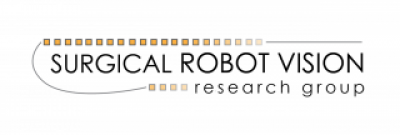UCL Robotics consists of the following research labs:
- Aspire Create
Website: http://www.ucl.ac.uk/aspire-create
Aspire Create, the Centre for Rehabilitation Engineering and Assistive Technology, is an exciting joint research venture between the Aspire Charity, University College London and the Royal National Orthopaedic Hospital, Stanmore.
The centre was established at the beginning of 2014 to develop translational research to improve the quality of life of people with spinal cord injuries (SCIs). Currently, it houses six academics (Dr Tom Carlson, Dr Lynsey Duffell, Dr Sara Ghoreishizadeh, Prof Rui Loureiro, Dr Steve Taylor and Dr Anne Vanhoestenberghe), along with their researchers. This rapidly growing centre investigates techniques that are applicable and transferable between different domains in related areas of interest, including, but not limited to spinal cord and nerve injury, stroke, muscular dystrophy, amputation, the ageing population and training of specialised skills (e.g. surgical).
- Soft Haptics and Robotics Lab
PI: Prof. Helge A Wurdemann
Research Areas: bio-inspired, soft and stiffness-controllable robotics innovative haptic interfaces sensor development robotic art
Robots:
Description: The Soft Haptics and Robotics Lab is within the Department of Mechanical Engineering, University College London. Our research aim is to bring together #Haptics and #SoftRoboticsand explore solutions to ensure safe human-robot interaction and to dramatically innovate and enhance haptic perception when the sense of touch is lost. We are interested in bio-inspired designs and in transforming these into robotic embedded systems. We envision our research resulting in novel innovative medical device, being driven by patient’s needs and enhancing human life.
- Surgical Robot Vision (SRV) Research Group

PI: Prof. Danail Stoyanov
Co-Is: Dr. Evangelos Mazomenos, Dr. Agostino Stilli, Dr. Franciscos Vasconcellos
Research areas: Surgical robotics, computer vision, machine learning and AI for medical imaging and medical robotics, soft robotics for healthcare applications, optics for medical imaging, sensing for medical robotics
Robots: Intuitive Surgical DaVinci System First Generation with daVinci Research Kit (x2), LBR iiwa – KUKA (x2), UR3 – Universal Robots, Virtuose 6D – Haption, Multiple custom robotic systems for surgical applications
Imaging systems: CT Scanner – O-Arm – Medtronic, CT Scanner – C-Arm – Siemens Healthineers, Oculus Rift – Oculus, Event-based cameras – Prophesee, Multiple clinical US scanners, laparoscopes and colonoscopes.
Computing: NVIDIA DGX Station (4XTESLA V100) (x2)
Sensing: Force sensing – F/T Sensor Mini40 – ATI Industrial Automation, Shape sensing – FBG sensors – FBGS Technology
3D printing and manufacturing: Ultimaker S3 and S5 – Ultimaker, Form 3 – Formlabs, Mark Two – Markforged, Prox 100 – 3d Systems, Milling and laser cutting machines
Surgical simulators: dV-Trainer – Mimic Simulations
Info: The Surgical Robot Vision Research Group works on computer vision and artificial intelligence which can be applied to surgery and robot-assisted surgery.We are a research team working within the Wellcome / EPSRC Centre for Interventional and Surgical Sciences and the Department of Computer Science at University College London. We are also part of the Centre for Medical Image Computing (CMIC). Our particular focus is on developing real-time algorithms for computing the 3D geometry and motion of the anatomy, surgical camera, and instruments – and for combining this information with pre-operative and intraoperative imaging modalities and other surgical sensors. The key challenge is to find solutions which are robust to the non-rigid and highly dynamic nature of the surgical site and the complex requirements of the surgical procedure and the operating theatre. Our objective is to translate our computational methods and technology for the operating theatre in order to enable less invasive and more accurate procedures, which improve the safety, quality, and efficiency of surgical care.
 Close
Close

